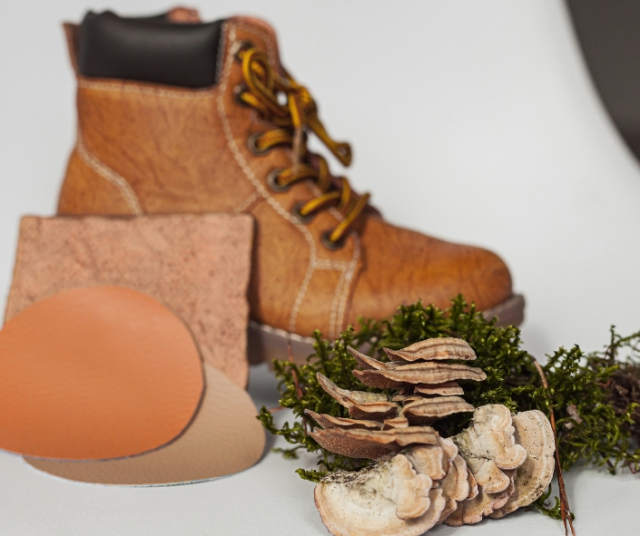In the continuous search for sustainable alternatives, fashion has become a favorable field for innovation and environmental awareness. One of the key areas of focus has been the replacement of traditional leather with more ethical and environmentally friendly options. In this context, vegan leather has emerged as a promising option that offers an alternative without compromising on style or quality.
Vegan leather, also known as synthetic leather or artificial leather, is presented as an innovative and ethical response to the demand for sustainable alternatives in the fashion industry. At its core, this material revolutionizes the way we perceive elegance and functionality, while addressing ethical and environmental concerns associated with conventional leather.
Rather than relying on animal exploitation, vegan leather is produced using a variety of synthetic materials, with polyurethane (PU) and polyvinyl chloride (PVC) being two of the most common. Polyurethane microfiber, for example, combines high-strength polymers with textile microfibers, impressively imitating the texture and appearance of animal leather. This process not only ensures similar aesthetics, but also promises durability and versatility.
A fascinating alternative is Piñatex, derived from the fibers of pineapple leaves. This approach not only creates a vegan leather unique in its texture, but also uses byproducts from the pineapple industry, contributing to the reduction of agricultural waste. Similarly, cork leather, obtained from the bark of the cork oak, offers a lightweight, waterproof and wear-resistant option, highlighting the diversity of sustainable sources available.
Beyond these options, some brands are exploring bio-engineering to create vegan leather from microorganisms such as yeast and bacteria. This technological cutting-edge promises a future where vegan leather production is even more sustainable in terms of processes and decomposition, marking a new era in the convergence between fashion and ethics.
Types of Vegan Leather
Polyurethane Microfiber (PU): This type of vegan leather is popular for its similarity to animal leather. Polyurethane microfiber is produced by combining polyurethane and textile microfibers, creating a strong and durable material. This vegan leather is widely used in the making of clothing, footwear and accessories.
Piñatex: An innovative and sustainable option, Piñatex is obtained from the fibers of pineapple leaves. This material is not only resistant and flexible, but also uses byproducts from the pineapple industry, thus reducing agricultural waste. Piñatex has gained popularity in the manufacture of bags, footwear and fashion garments.
Cork Leather: Cork leather is a unique and environmentally friendly alternative. It is obtained from the bark of the cork oak, a tree that is not damaged during the harvesting process. This material is lightweight, waterproof and wear-resistant, making it an excellent option for items such as wallets and accessories.
Bio-Leather : Some brands are experimenting with bio-engineering to create vegan leather from microorganisms such as yeast and bacteria. These technological advances promise a more sustainable vegan leather in terms of production and decomposition.
Environmental Benefits of Vegan Leather
Choosing vegan leather is not only ethical, but also offers a number of environmental benefits compared to animal leather. Some of these benefits include:
- Reduced Carbon Footprint: Vegan leather production typically generates fewer greenhouse gas emissions compared to raising animals for leather.
- Less Use of Natural Resources: Making vegan leather generally requires less water and land than traditional leather production, which involves growing large amounts of food for livestock.
- Avoid Chemical Contamination: Traditional leather production often involves the extensive use of toxic chemicals in the tanning processes. Vegan leather, being synthetically manufactured, can avoid the need for these harmful chemicals.
Challenges and Considerations
Despite the benefits, the widespread adoption of vegan leather is not without challenges and ethical considerations. Some of these include:
Impact of Synthetic Materials: The materials used in the manufacture of vegan leather, such as polyurethane and PVC, are derived from petrochemicals. The extraction and production of these materials can have significant environmental impacts.
Durability and Quality : Although advances in technology have improved the durability of vegan leather, some people argue that it still does not match the durability and quality of animal leather.
End of Life Challenges: The biodegradability of different types of vegan leather varies. Some synthetic materials can persist in the environment for an extended period.
The Impact on the Fashion Industry
The rise of vegan leather has sparked a revolution in the fashion industry, marking a significant shift towards more ethical and sustainable practices. This phenomenon not only responds to growing concerns about animal welfare, but also reflects growing consumer demand for environmentally friendly products.
Fashion brands, aware of this transformation in consumer preferences, are integrating vegan leather into their collections in a significant way. This change not only represents an ethical response to animal exploitation, but has also become a commercial strategy to attract a public that is increasingly aware of and committed to sustainability.
The widespread adoption of vegan leather in fashion has led to a greater diversity of options and styles available to consumers. From stylish handbags to trendy shoes and cutting-edge clothing, vegan leather has proven to be not only an ethical alternative, but also a stylish and fashionable choice.
This change has also impacted the perception of luxury in the industry. Renowned brands have begun to embrace vegan leather, challenging the notion that elegance and quality can only be derived from animal leather. This not only redefines fashion standards, but also contributes to the construction of a more ethical and progressive brand image. In addition, vegan leather has generated employment in the production of sustainable materials and in the manufacture of fashion products. This expansion in the sustainable supply chain not only benefits consumers, but also has a positive impact on the communities involved in vegan leather production.
